Key highlights
- Understand what a 404 error is and why it appears on your website or during browsing.
- Learn the different types of 404 errors and how they affect user experience and SEO.
- Discover step-by-step methods to identify and fix 404 errors using tools like Google Search Console and plugins.
- Explore how to customize your 404 page to keep users engaged and reduce bounce rates.
- Fix and prevent 404 errors easily with Bluehost’s built-in redirect tools, plugin support and expert customer service.
You’re searching for something online and you click a link that looks like it has the answer. But instead of the page you were hoping for, you see a found error message usually something like “404 Page Not Found.”
You might think:
- Was the page permanently removed?
- Is the HTTP request incorrect?
- Did the server fail to respond properly?
While a single 404 error code might be nothing more than a broken link, seeing them repeatedly on your own website can mean trouble. It can confuse visitors, make your site look unreliable and even hurt your search engine rankings.
In this guide, we’ll break down what 404 errors are, why they matter, what causes them and how to fix them quickly and easily. Let’s dive in!
What is a 404 error code?
A 404 error is an HTTP (Hypertext Transfer Protocol) status code that tells you the page you’re trying to visit can’t be found on the website’s server. This means the server is working correctly, but the specific file requested or page no longer exists at the specified URL.

This usually happens when a page has been moved, deleted or never existed at all, often due to a mistyped URL (Uniform Resource Locator).
It typically appears in formats like:
- 404 Not Found
- HTTP 404 Not Found
- 404 Page Not Found
- The requested URL was not found on this server
- File or directory not found
Wherever the issue comes from, the underlying meaning is the same: the requested content cannot be found. Let’s take a closer look at the different types of 404 errors you might come across.
What are the types of 404 errors?
Not all 404 error messages are the same. They vary based on how they occur and how your website handles them. Some are more harmful than others. Understanding each type helps you diagnose issues more accurately and apply the right fix.
Here’s a breakdown of the most common types of 404 errors:
| Types of 404 error | Description |
| Standard 404 error | A typical “404 Not Found” results from a broken or outdated link. |
| Soft 404 error | The page shows a “not found” message but gives a 200 OK status. |
| Custom 404 error page | A user-designed custom page that improves UX with branding or links. |
| Hidden/Restricted 404 | Occurs due to blocked or private file paths. |
| Broken internal link | Internal links pointing to deleted or moved pages. |
| Broken external link | Links from other websites to pages that no longer exist. |
| Client-side 404 | Triggered by typos, bookmarks or bad browser cache. |
| Server-side 404 | Due to configuration errors like bad redirects or routing. |
Each type of 404 error points to a different root cause, whether it’s a technical misstep, outdated link or missing redirect. Recognizing which type you’re dealing with makes it easier to keep your site running smoothly and your users happy.
Next, let’s explore what actually causes these 404 errors to happen in the first place.
What causes 404 error code?
A 404 error code can happen for a variety of reasons, both on the visitor’s end and the website owner’s side. These errors typically occur when a user attempts to access a page that the server can’t find. Let’s break down the most common causes:
1. Broken or mistyped URLs
Sometimes, the issue is as simple as a typo in the URL. If a user enters the wrong web address or clicks a link with an incorrect path, the browser won’t be able to find the intended page. This results in a 404 error.
2. Deleted or moved pages without redirects
If a page has been deleted or moved to a new URL and no 301 redirect is set up, users will hit a dead end. This is one of the most common causes of a 404 error message on active websites.
3. Changing domain names or folder structures
Rebranding your site or reorganizing your content without updating external and internal links may lead users to 404 pages.
4. Hosting or server misconfiguration
Sometimes, the page exists, but your server isn’t set up correctly to deliver it. Misconfigured .htaccess files, permission errors or outdated server-side caching rules can prevent users from accessing the content, even when it’s there.
5. DNS misconfigurations
If your domain’s DNS (Domain Name System) settings are incorrect, users might not be directed to the correct server, triggering 404 errors. This often happens during site migrations or domain name changes.
Each of these issues can contribute to a poor user experience and negatively impact your SEO if left unresolved. Up next, let’s explore why you need to resolve 404 errors effectively.
Why should you fix 404 errors?
The occasional 404 error code page is nothing to be concerned about. And more often than not, they can be resolved by simply ensuring that the URL you typed is correct.

However, there are several reasons why you may still want to fix them.
1. Poor user experience
When users land on a 404 error page, they’re often frustrated by the inability to find the content they were looking for, which compromises a positive user experience. This frustration can lead to a poor user experience, higher bounce rates with users abandoning your site in search of other websites.
2. SEO ranking and crawl issues
Search engines like Google rely on efficient crawling of your website to index pages and rank them appropriately. When a crawler hits a 404 error repeatedly, it reduces crawl efficiency and may prevent other pages on your website from being indexed.
While a few 404s are normal, too many broken links or inaccessible pages can confuse search engine bots. This might lead to crawl errors, wasted crawl budget and missed indexing opportunities, hurting your site’s visibility over time.
3. Lost traffic and conversions
If key pages like product listings, landing pages or blog posts return 404 errors, you could be losing potential customers or leads. Broken links disrupt user journeys, which means missed opportunities to convert visitors into buyers, subscribers or followers.
Even if 404 error codes aren’t always critical, fixing them shows that you care about your visitors and your site’s performance.
But if you want to get to the root of the problem, you’ll need to learn how to spot and fix 404 code errors when you encounter them.
How to fix the 404 error code, step by step?
Fixing 404 error code is usually a simple process. Broken or dead links can be fixed by implementing redirects. If the problem isn’t localized to your machine, then various simple server fixes should do the trick.

To fix a 404 error, follow these methods:
- Identify broken URLs (via Google Search Console or Analytics)
- Set up 301 redirects to correct pages
- Disable plugins and themes
- Restore or recreate missing pages (if needed)
- Update internal links or navigation menus
- Configure .htaccess file
- Fix file permissions
- Check the domain and DNS settings
1. Identify broken URLs (via Google Search Console or Analytics)
Use tools like Google Search Console or Google Analytics to quickly find and troubleshoot 404 errors on your site.
Here are a few simple ways to do that:
- Google Search Console: Use Google Search Console’s Page Indexing Report to identify 404 errors on your website.
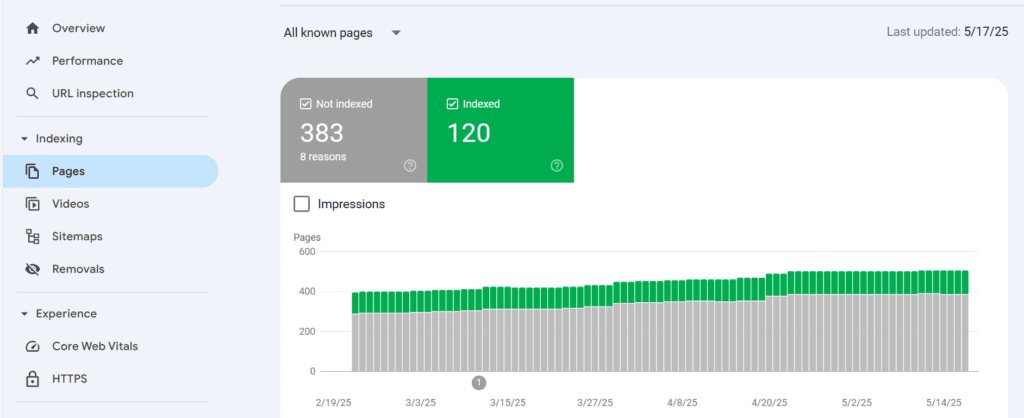
- SEO tools: Use tools like Screaming Frog or Ahrefs to crawl your site and detect broken links.
- Log file analysis: Look for 404 status codes in your website’s server log files.
- Plugins: WordPress plugins like Broken Link Checker can quickly scan for broken links.
- Manual testing: Click through your site to spot broken links, especially after deleting or moving pages.
2. Set up 301 redirects to correct pages
If a page no longer exists or the URL is incorrect, set up a redirect to send users to the right page on the web server. At Bluehost, we make this process easy with built-in redirect tools in your control panel so you can fix 404 errors quickly.
- Use 301 redirects for permanent changes.
- Use 302 redirects for temporary moves.
Also read: How to Redirect a URL (301, 302 & More) – Beginner’s Guide to URL Redirects
Ways to set up redirects:
- With a plugin: Use a plugin like Yoast SEO Premium. Go to Redirects, enter the old and new URLs and save.
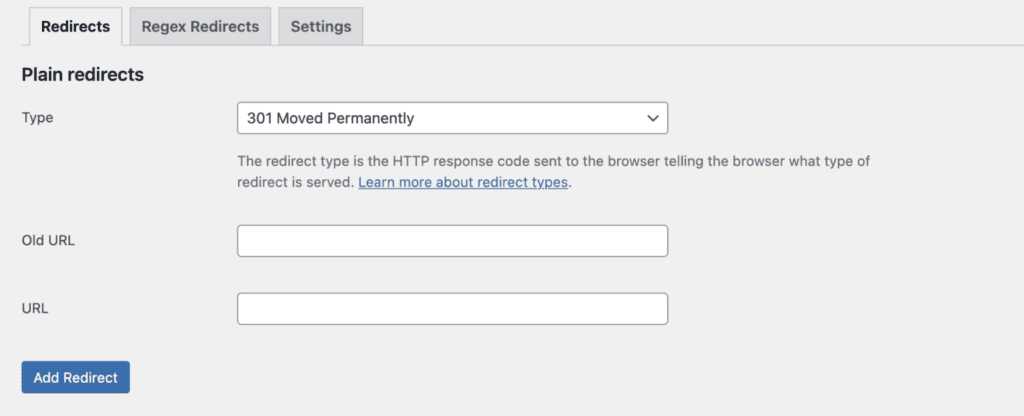
- With Bluehost:
- Log in to your control panel.
- Click Domains > Manage > Redirects.
- Enter the old and new URLs.
- Click Add Redirect.
- Test to make sure it works.
Redirects help you fix 404 errors quickly while keeping your users and SEO happy.
3. Disable plugins and themes
If you see unexpected 404 errors on your WordPress site, a faulty plugin or theme might be the cause.
Steps to troubleshoot:
Switch your theme:
- Go to Appearance > Themes in your WordPress dashboard.
- Check if the 404 errors disappear.
- Activate a default theme (like Twenty Twenty-Four).
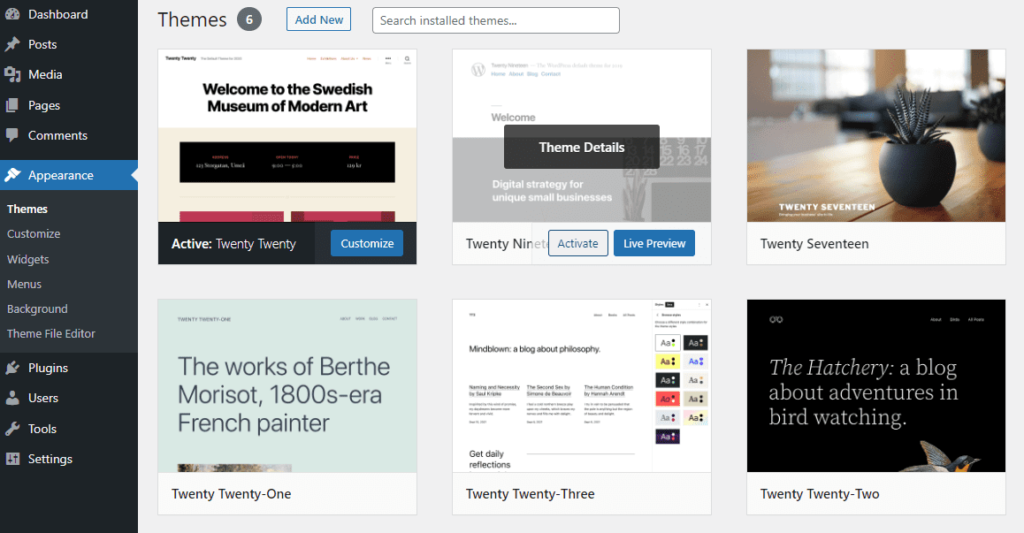
If they do, consider using a different theme.
Deactivate all plugins:
- Go to Plugins > Installed Plugins.
- Select all plugins, choose Deactivate from the Bulk Actions menu and click Apply.
- Test your site.
If the 404s are gone, re-enable plugins one at a time to find the cause.
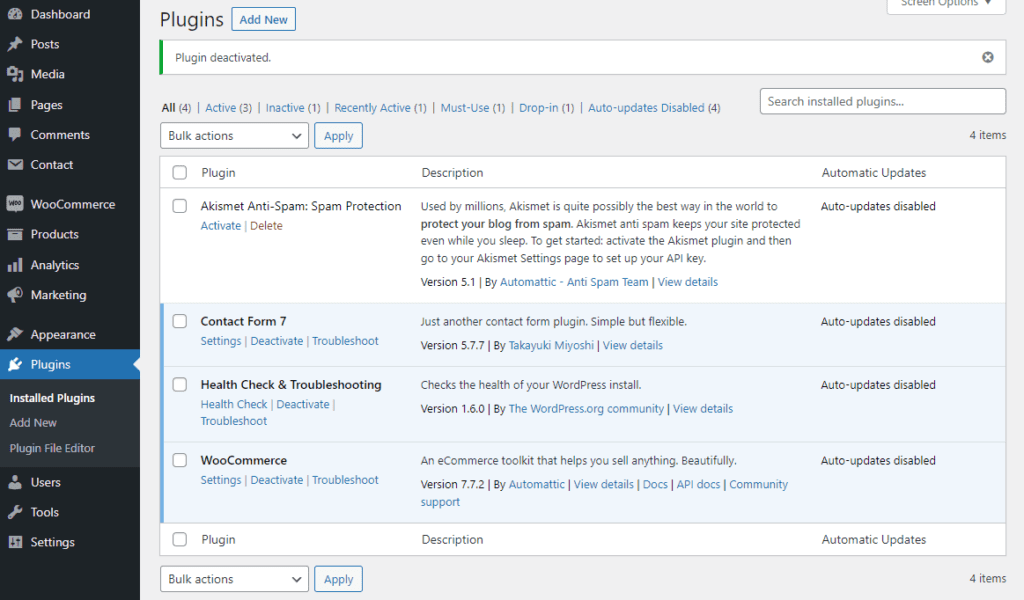
You can also manage plugins and themes directly from your Bluehost dashboard for easier access.
Note: Always back up your site before making changes.
4. Restore or recreate missing pages
If an important page was accidentally deleted or moved, restoring or recreating it can resolve 404 errors.
How to do it:
- Check if you have a backup and restore the missing page.
- If no backup is available, recreate the page manually.
- Use the same URL as the original if possible.
- Test the page to confirm it loads correctly.
5. Update internal links or navigation menus
Broken links within your website can lead to 404 errors. Updating them ensures a smooth user experience.
How to fix it:
- Go to your WordPress dashboard.
- Navigate to Pages, Posts or Menus.
- Check for links pointing to missing or incorrect URLs.
- Update the links with the correct URLs
- Save changes and test the links.
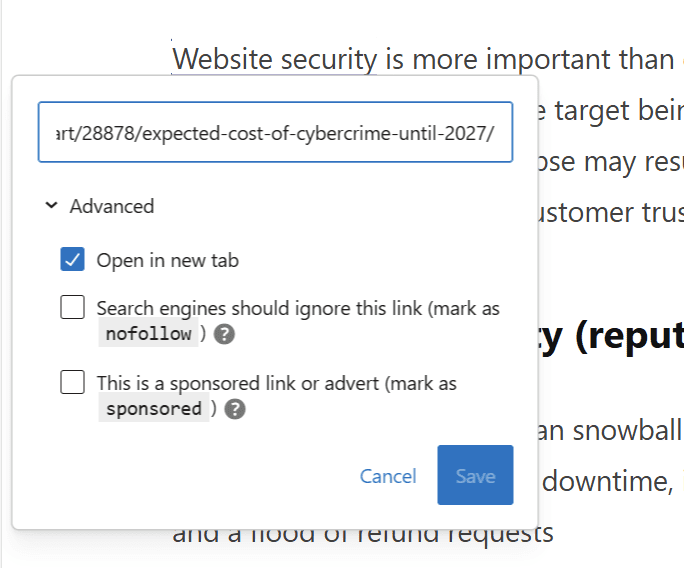
Keeping your site’s internal structure up to date helps avoid unnecessary 404 errors and improves site navigation.
6.Configure .htaccess file
Misconfigured .htaccess files or errors in a proxy server configuration can block access even when a user attempts to reach a valid page.
Option 1: Reset via WordPress
- Go to Settings > Permalinks in your dashboard.
- Click Save Changes without editing anything.
These regenerates the .htaccess file automatically
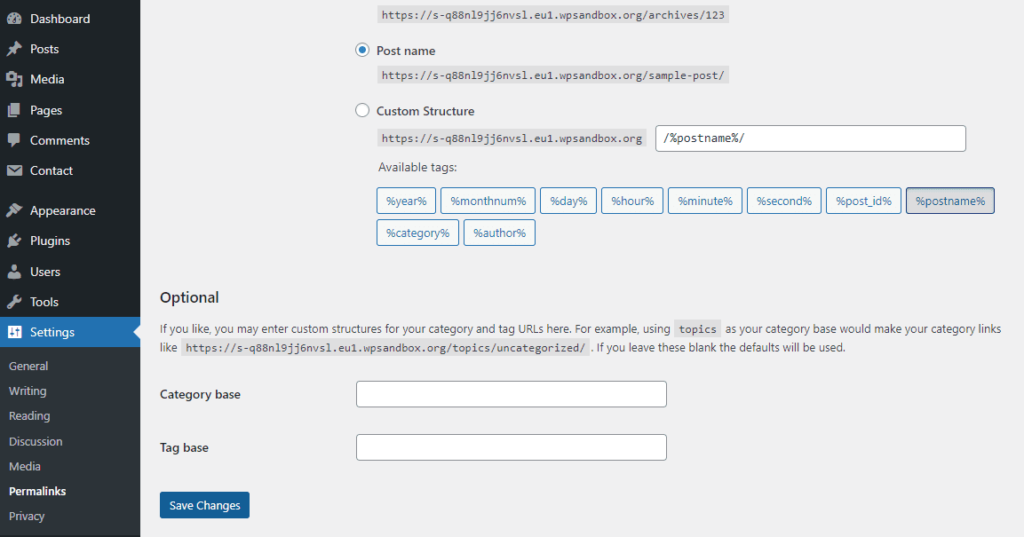
Also read: How to Change Permalink in WordPress
Option 2: Reset via FTP
- Access your site via FTP (use FileZilla or similar).
- Locate the .htaccess file in the root directory.
- Back it up, then delete it.
- Check if the 404 error is resolved.
- If fixed, regenerate it by going to Settings > Permalinks and clicking Save Changes.
Always back up your site before making changes.
7.Fix file permissions
In some cases, a 404 page not found error can occur not because the page is missing. It can be because essential files like images, CSS or JavaScript are being blocked due to incorrect file permissions. This causes the server to return a 404 response code when trying to load those assets.
How to fix it:
- Log in to your Bluehost control panel.
- Go to Advanced > Files > File Manager.
- Find the folder with the file (image, script, etc.) causing the issue.
- Select the file and click the Permissions icon at the top.
- Ensure Read permission is enabled.
- Click Change Permissions, then test the page.
If it doesn’t fix the issue, revert the permissions

8. Check the domain and DNS settings
If you recently changed your hosting provider or domain settings, your site may show 404 errors during DNS propagation (which can take 24–48 hours).
How to check DNS settings in Bluehost:
- Log in to your Bluehost control panel.
- Click Domains and ensure Name Servers are set to:
- ns1.bluehost.com
- ns2.bluehost.com
- Go to Manage > DNS to open the DNS Zone Editor.
- Check for incorrect IP addresses or records.
- Use tools like MxToolbox to validate DNS setup.
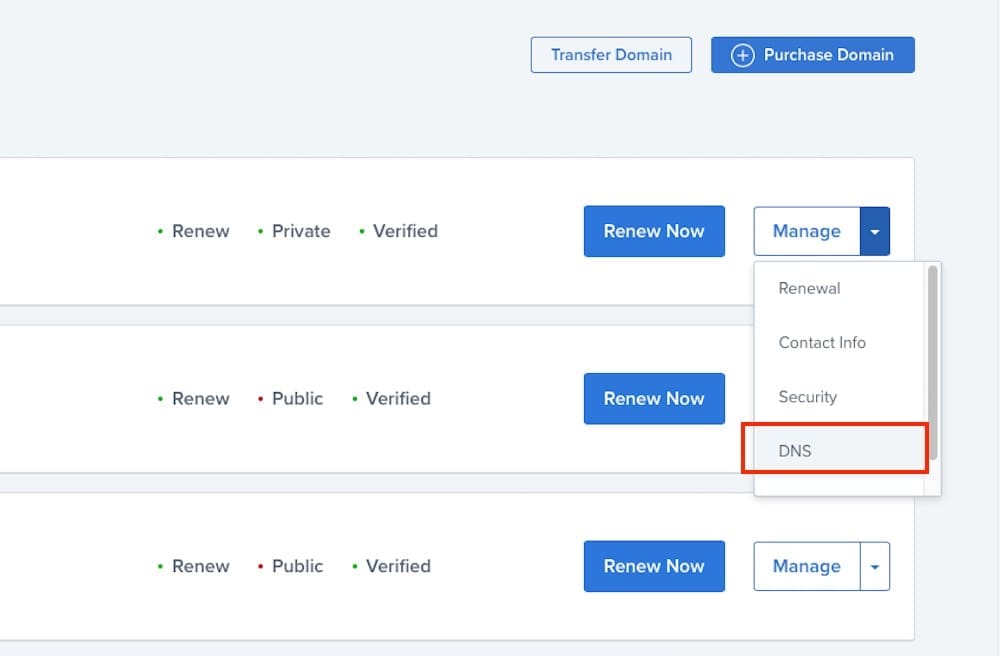
If you’re unsure, contact Bluehost support for help.
Once you’ve fixed the technical causes of 404 errors there’s still one more important step to consider: what your users see when things go wrong.
Even with the best maintenance, some 404 errors are unavoidable. That’s why creating a custom error page can make a big difference in how users experience your site.
Also read: Common DNS Issues and How to Solve Them
How to customize your 404 page for a better user experience?
Not all 404 error pages have to lead to dead ends. With a bit of thoughtful design, you can turn a frustrating moment into a helpful and even engaging experience. A well-crafted 404 page keeps users on your site and gently guides them toward the content they’re looking for.

Above is an example of a customized Bluehost 404 error page. Considering this, here are a few ways to customize your 404 page for maximum impact:
1. Add helpful navigation or search bar
Give users a quick way to continue browsing your site. A simple menu or search function can help them find the requested resource they were originally looking for — or discover something even better.
2. Include a friendly message (humor optional)
A warm, human tone can make a difference. Whether you go with a sincere apology or a playful joke, a personal touch can soften the blow of a broken link. For example, Spotify’s 404 error page often uses playful, music-inspired messaging such as: “This page is out of tune.”
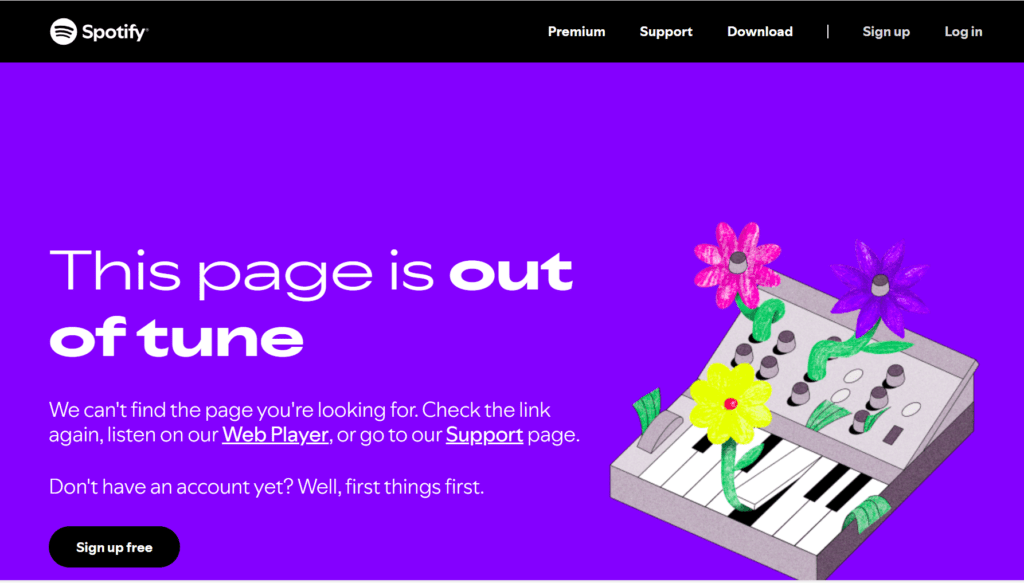
3. Link to popular or recent content
Don’t leave users at a dead end. Add links to your top blog posts, trending products or recently updated pages to re-engage their interest.
Customizing your 404 page isn’t just about design, it’s about keeping your visitors engaged and guiding them back to useful content. A thoughtful 404 page shows users that you care about their experience, even when things go wrong.
But of course, the best approach is to prevent those 404 errors from happening in the first place and that’s where reliable hosting comes in.
How does Bluehost help to prevent and fix 404 errors?
At Bluehost, we know that maintaining a healthy website is key to delivering a great user experience and strong SEO performance. That’s why we offer several built-in features and tools to help you easily detect, fix and prevent 404 errors.
1. Free tools for redirects
We make it simple to set up 301 or 302 redirects directly from your Bluehost control panel. Just log in, head to the Domains > Redirects section and enter your old and new URLs, no coding needed.
2. Plugin support
If you’re using WordPress, we support powerful plugins like Yoast SEO Premium and Redirection. This makes it easy to manage broken links and redirects right from your dashboard.
3. Support when you need it
And if something still doesn’t work as expected, our friendly support team is available 24/7. We’ll help you troubleshoot and fix any 404 issues quickly, so your visitors always find what they’re looking for.

Final thoughts
404 errors are a common issue for any website owner, but they don’t have to be a major problem. When managed properly, they’re easy to fix and even easier to prevent.
The key is to be proactive: monitor your site regularly, set up proper redirects and keep your content structure clean. That’s where Bluehost comes in.
At Bluehost, we make it simple to stay ahead of 404 errors with built-in redirect tools, plugin support and reliable hosting performance. Whether you’re just getting started or running a growing site, our tools are designed to help you fix issues fast and prevent them in the future.
Start now! Fix 404 errors fast with Bluehost WordPress hosting and keep your visitors on the right track.
FAQs
Occasional 404 errors are normal and won’t hurt your site. However, too many broken links, especially on important pages can lead to crawl issues and missed indexing opportunities, indirectly affecting search results.
Yes. You can track them using tools like Google Search Console, Google Analytics and SEO crawlers like Ahrefs or Screaming Frog. These tools show which URLs are broken and how users are encountering them.
You can set up a 301 redirect to point the broken URL to a live page. This can be done via your website hosting server or using WordPress plugins like Yoast SEO or Redirection.
A good custom 404 page should include:
1. A friendly message
2. Navigation back to your homepage
3. Links to popular or recent content
4. A site search bar to help users find what they need
This helps keep users engaged even when they hit an error.
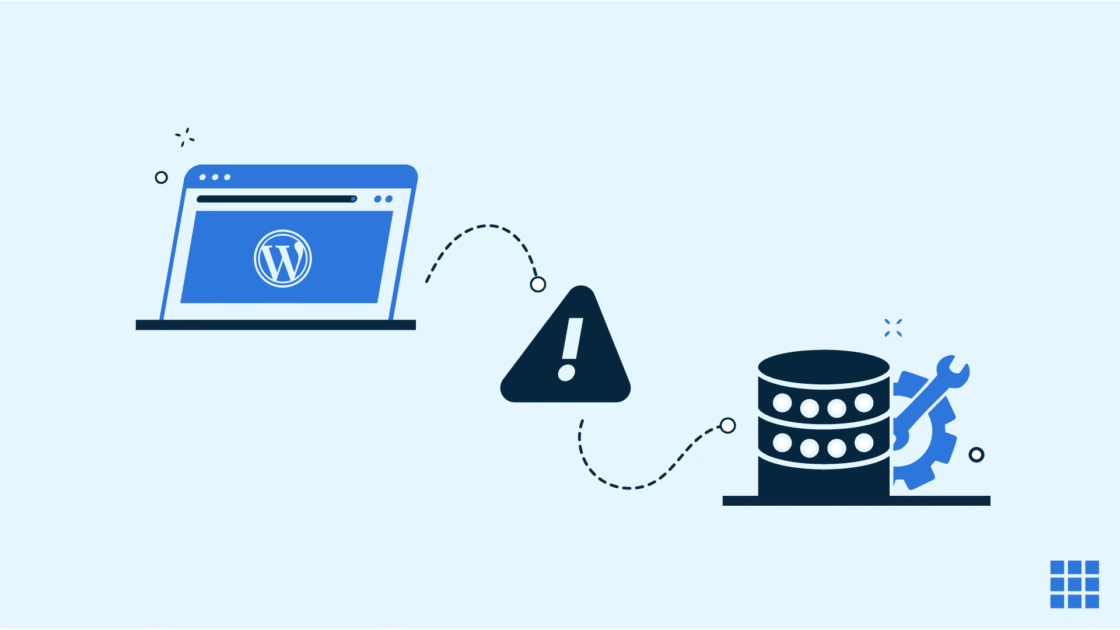



Write A Comment